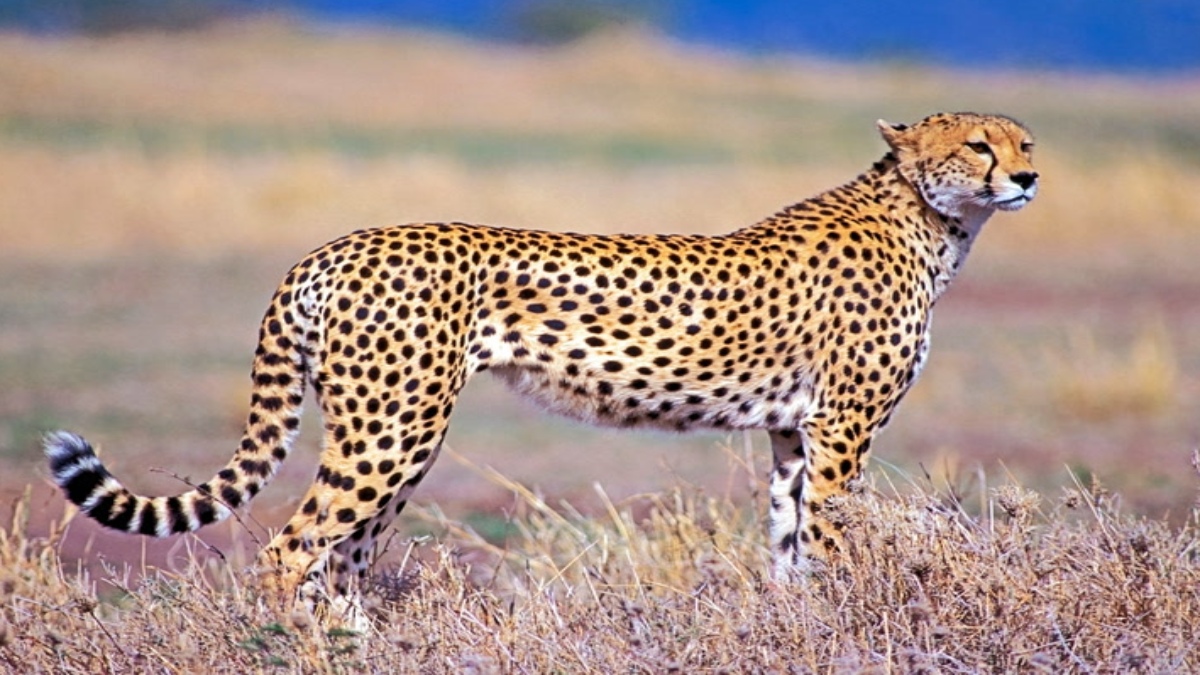


Cheetah is likely to run again in November this year at the Kuno National Park in Madhya Pradesh, state Forest Minister Vijay Shah said on Sunday. The country’s last spotted cheetah died in Chhattisgarh in 1947 and it was declared extinct in the country in 1952.
The Wildlife Institute of India (WII) some years ago prepared a cheetah re-introduction project. The Supreme Court had earlier given its approval to introduce African cheetahs to a suitable habitat in India on an experimental basis.
“We have started the process of creating an enclosure for around 10 cheetahs, including five females, to be brought from South Africa to Kuno in Sheopur district and it is going to be completed by August,” PTI quoted Shah as saying.
Officials from India will be sent to South Africa for sensitisation and training in June and July this year and according to the plan, the transportation of the cheetahs will take place in October and November, he said.
“According to the approved timeline sent to us by the
Ministry of Environment, Forest and Climate Change this week, the tentative budget outlay of the ‘Project Cheetah’ is Rs 1,400 lakh for this fiscal,” the minister said.
The National Tiger Conservation Authority (NTCA) is going to release the money for the project to Madhya Pradesh and the Wildlife Institute of India (WII) at Dehradun next month, Shah added.
An expert from South Africa visited the Kuno National Park on 26 April this year along with scientists from the WII and inspected the facilities and habitat created there for the introduction of African cheetahs. They approved it and now the final process of bringing the cheetah is underway, a forest official said.
Earlier, experts from the WII had visited four places in Madhya Pradesh to look for the best habitat for the introduction of African cheetah in the country last year, Additional Principal Chief Conservator of Forests J.S. Chauhan, told PTI.
The WII team had visited the Kuno National Park in MP’s Sheopur district, the Nauradehi sanctuary in Sagar district, the Gandhi Sagar sanctuary on the northern boundary of Mandsaur and Neemuch districts and the Madhav National Park in Shivpuri district, Chauhan said.
“Madhya Pradesh had in the past been home to cheetahs. The state has a long conservation history…we have the habitat. We also have a successful animal translocation track record,” Chauhan said, referring to the tiger reintroduction programme in the Panna Tiger Reserve in 2009.
Wildlife experts say that Kuno, spread over an area of over 750 sq km in the Chambal region, has a conducive environment for the cheetah. The region has a sizeable population of four-horned antelopes, chinkara, nilgai, wild boar, spotted deer and sambar—a good prey base for the cheetahs.
Cheetah is considered vulnerable under the International Union for Conservation of Nature’s (IUCN) red list of threatened species, with a declining population of less than 7,000 found primarily in African savannas.